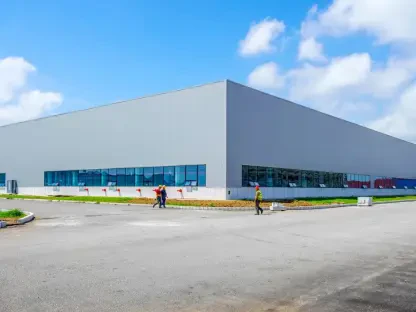The trucking industry is showing signs of a positive shift in its economic condition. Recent months have seen multiple metrics indicating improved prosperity for trucking companies, driven by heightened freight market activity and better overall trucking conditions. This article delves into the various indicators and trends that suggest the industry is on the cusp of sustained growth. Using data from both the U.S. and Canadian markets, we can understand the potential trajectory of this vital sector and what it means for carriers.
Strongest Conditions Since April 2022
The Trucking Conditions Index (TCI) developed by FTR has reached its highest levels since April 2022, signaling a notable improvement in the industry’s economic landscape. In November, the TCI surged to a reading of 3.02, up from 0.49 in October. This remarkable improvement can be credited to lower fuel costs and better rates, creating a much more favorable environment for carriers. FTR’s projections suggest that the freight market will remain consistently favorable for carriers by the second quarter of 2025, underscoring a period of sustained optimism.
Despite the positive near-term outlook, FTR notes that the favorable conditions seen in November are expected to be matched again in the third quarter of 2025. This indicates a transitional phase in the first half of 2025, where stability will gradually be achieved. The potential fluctuations in this period are seen as necessary for the longer-term stabilization of the market. There’s an anticipation that carriers will continue to enjoy favorable conditions as these metrics stabilize, providing a robust foundation for the industry moving forward.
Increase in Trailer Orders
In December, trailer orders climbed by 11%, reaching an impressive total of 25,334 units, which not only represents a year-over-year growth of 7% but also marks the highest monthly total since October 2023. This surge in orders subsequently expanded backlogs to 104,725 units, pushing the backlog/build ratio up to 8.9 months, a peak that hasn’t been seen since January 2024. The increase in trailer orders highlights the industry’s response to previously low production levels, suggesting a possible reduction in the pressure on Original Equipment Manufacturers (OEMs) to scale back production in the short term.
However, in the broader scope of 2024, the scenario presents a mixed picture. While North American Class 8 net orders rose by 11% year over year, U.S. trailer net orders experienced a notable decline of 27%. This dichotomy is likely driven by for-hire fleets shifting their investment priorities from trailers to new power units—a shift perhaps influenced by diminished profitability or altered trade cycles. Accordingly, this adjustment reflects the broader adaptive strategies carriers may employ to navigate varying market conditions.
Canadian Spot Market Trends
In the Canadian spot market, December closed 2024 on a high note, with spot market volumes reaching their peak since March 2023. Loadlink data indicated a 14% increase in freight availability from November and an 18% year-over-year growth, making December the strongest month in 2024. Simultaneously, capacity tightened as truck postings saw a significant drop, evidenced by a reduction in the truck-to-load ratio to 2.24 from 3.19 in November. This demonstrates how increased demand was met with a decreasing availability of trucks, tightening the market significantly.
Loadlink attributes this robustness in the spot market to strong consumer demand, particularly driven by the holiday season and a steady decline in truck capacity. The Freight Index for December indicates that the high volume of activity is likely to continue into January 2025, suggesting a promising future for carriers operating in the spot market. This tight capacity combined with strong consumer demand hints at continued stability and growth, painting a positive picture for the Canadian trucking sector as it heads into the new year.
U.S. Market Dynamics
In the United States, market dynamics have also shown similar robust trends, reflecting the national trucking landscape’s enduring strength. Truckstop and FTR Transportation Intelligence reported significant rate increases for the week ended January 10, which largely correlated with severe winter weather causing an uptick in demand. All equipment types observed rate improvements, with reefer rates hitting their highest levels in over a year. The surge in load postings surpassing that of truck postings is reflected in a Market Demand Index reaching 95.5, the highest since June 2022.
Tim Denoyer, a senior analyst at ACT Research, highlighted that winter weather had induced a tightened spot market in January, coupled with pre-tariff shipping activities supporting renewed vigor in the first half of 2025. Despite the notable rise in rates and load postings, there is cautious optimism concerning the sustainability of these trends. As adverse weather and inventory adjustments are temporary factors, these conditions present both opportunities and challenges that need to be navigated carefully by industry players to ensure lasting gains.
Economic Indicators and Future Outlook
The trucking industry is experiencing a notable positive shift in its economic condition. Recent months have unveiled numerous metrics that indicate improved prosperity for trucking firms. These improvements are fueled by heightened freight market activity and generally better trucking conditions. This article explores various indicators and trends suggesting that the industry is on the brink of sustained growth. For example, the freight volume has surged, leading to increased revenues for carriers. Furthermore, advancements in logistics technology have enhanced operational efficiency, allowing trucking companies to better manage their fleets and reduce costs. Additionally, consumer spending has risen, driving demand for goods transportation. By analyzing data from both the U.S. and Canadian markets, we can gain insight into the potential trajectory of this crucial sector and what it signifies for carriers. The overall outlook for the industry is promising, with expectations of continued growth resulting from the convergence of these positive factors.








